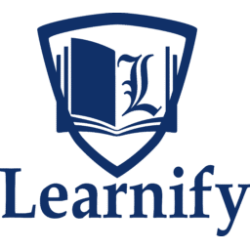Emerging Contaminants and Environmental Health Training Course
Introduction
Emerging contaminants, such as pharmaceuticals, personal care products, microplastics, and PFAS, pose growing risks to environmental health. This training course focuses on understanding the sources, impacts, and mitigation strategies for these contaminants. Participants will explore cutting-edge research, regulatory developments, and innovative technologies to address the challenges posed by these pollutants, ensuring a safer environment and healthier ecosystems.
Course Objectives
By the end of this course, participants will:
- Understand the nature and sources of emerging contaminants.
- Assess the environmental and human health impacts of these pollutants.
- Explore current detection and monitoring techniques.
- Examine global regulatory frameworks and standards.
- Develop strategies to mitigate and manage the risks associated with emerging contaminants.
- Gain insights into future trends and innovations in addressing environmental health challenges.
Who Should Attend?
This course is designed for:
- Environmental scientists and researchers
- HSE professionals in industries with potential contaminant risks
- Environmental health practitioners
- Policy-makers and regulatory authorities
- Water, wastewater, and solid waste management professionals
- Consultants in environmental management and sustainability
- Academics and students in environmental health fields
- Professionals in industries dealing with chemicals, pharmaceuticals, or plastics
Advanced 5-Day Course Outline
Day 1: Understanding Emerging Contaminants
Session 1: Defining Emerging Contaminants
- Characteristics and examples (e.g., PFAS, microplastics, pharmaceuticals)
- Sources and pathways into the environment
Session 2: Environmental and Human Health Impacts
- Toxicity, bioaccumulation, and ecosystem disruption
- Case studies: Impact of microplastics and pharmaceuticals on aquatic life
Session 3: Current Research and Trends
- Advances in understanding contaminant behavior and fate
- Practical session: Reviewing recent scientific findings
Day 2: Detection and Monitoring Techniques
Session 1: Analytical Methods for Emerging Contaminants
- Techniques for detecting contaminants in water, soil, and air
- Overview of advanced spectrometry and chromatography tools
Session 2: Environmental Monitoring Programs
- Designing effective monitoring frameworks
- Practical session: Developing a contaminant monitoring plan
Session 3: Citizen Science and Public Engagement
- Leveraging community involvement in monitoring efforts
- Case studies: Successful citizen science initiatives
Day 3: Regulatory Frameworks and Risk Assessment
Session 1: Global and Regional Regulations
- Review of frameworks like REACH, TSCA, and WHO guidelines
- Emerging policies on PFAS, microplastics, and other pollutants
Session 2: Risk Assessment and Management
- Principles of hazard identification and risk characterization
- Practical session: Conducting a risk assessment for a hypothetical contaminant
Session 3: Challenges in Regulatory Implementation
- Addressing gaps in policy and enforcement
- Group discussion: Barriers to global regulatory harmonization
Day 4: Mitigation and Remediation Strategies
Session 1: Treatment Technologies for Contaminants
- Advanced filtration, adsorption, and biodegradation methods
- Case studies: Successful remediation projects
Session 2: Source Reduction and Pollution Prevention
- Strategies for minimizing contaminant release at the source
- Practical session: Designing a pollution prevention plan
Session 3: Waste Management Innovations
- Addressing contaminants in wastewater and solid waste streams
- Emerging technologies in circular economy applications
Day 5: Future Directions and Strategic Planning
Session 1: Innovations in Addressing Emerging Contaminants
- Role of AI, IoT, and big data in monitoring and mitigation
- Exploring nanotechnology and green chemistry solutions
Session 2: Building Resilience in Environmental Health
- Preparing for future challenges related to emerging contaminants
- Practical session: Developing a resilience framework for an organization
Session 3: Action Planning and Stakeholder Engagement
- Aligning organizational goals with environmental health priorities
- Group activity: Crafting a strategic action plan for managing emerging contaminants
Conclusion and Next Steps
- Certification of completion
- Access to resources, tools, and templates for environmental health management
- Networking opportunities with experts and peers in the field

